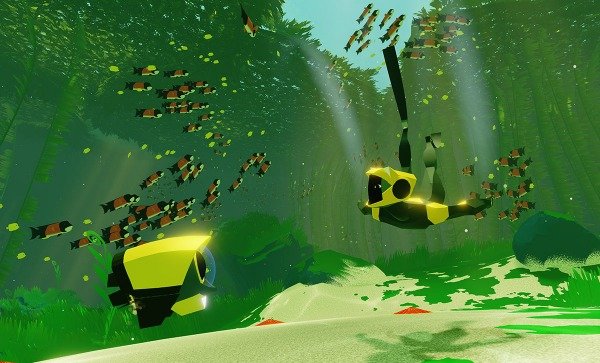How ABZÛ Was Able To Create Thousands Of Fish On Screen

Giant Squid Studios is working on a new game called ABZÛ for the PS4. The game is a visual marvel that really pushes the boundaries on interacting with aquatic life and exploring some of the mysteries of the ocean. The creative director explained how they were able to achieve that goal.
Matt Nava, creative director at Giant Squid Studios, talked to Shack News in an interview about how they managed to get thousands of fish on the screen at once, saying...
There's a lot of great features [In Unreal Engine 4] that are helping us do a lot of cool stuff, and we're able to render thousands of fish on screen. That's in part due to the extremely hard work that our team is doing here, but we're very grateful to be working with a very powerful tool like [Unreal Engine 4].
They were able to achieve a lot of this in due part to also changing how the fish were animated within the Unreal Engine 4. After working on the game for three years, they utilized a skeletal-free animation system based on mathematical algorithms instead of the traditional animation tree based around an internal skeleton.
Since they don't have to process skeleton animation data for each fish, it frees up tons of processing instructions as well as completely removes from memory any extraneous data that comes from reading through tons of animation data. It's a breakthrough technique for ABZÛ and it looks great in action.
Thanks to the optimizations of the Unreal Engine 4 they're able to render thousands of fish at any single one time without any major slowdown. It really is impressive that so many fish can be rendered and animated without killing the processor.
Interestingly enough, Ubisoft ran into this very problem with Assassin's Creed Unity, where all of the NPCs flooding the streets contained so much data that the CPU of the PS4 was having a hard time keeping up. In result, Ubisoft had to really work their way around those NPC issues in order to boost performance and maintain 30fps in Assassin's Creed Unity.
Nevertheless, despite the fact that Giant Squid have forgone the use of internal skeletons for the fish, the fish themselves still behave and are animated quite realistically. In fact, most of the fish are based on real life aquamarine life, but there are some “secret” creatures featured in the deeper depths of the game.
Your Daily Blend of Entertainment News
Given how visually immersive ABZÛ is, the game seemed ripe for PlayStation VR, but Nava shuts it down by explaining that the diver moves like a ballet dancer underwater; very nimble and very fast. In fact, she moves so fast that it may not be very convenient for those who use VR headsets, as it might give them a bad case of sea-based motion sickness.
It's cool to see a bigger indie game like ABZÛ making use of some of the more technically advanced features of the Unreal Engine 4 in order to render things that just weren't possible during the seventh gen. Hopefully, we get to see more studios with bigger budgets take advantage of the tech in the same way that Giant Squid has done and really push the Unreal Engine and the home consoles to their limits.
Staff Writer at CinemaBlend.

